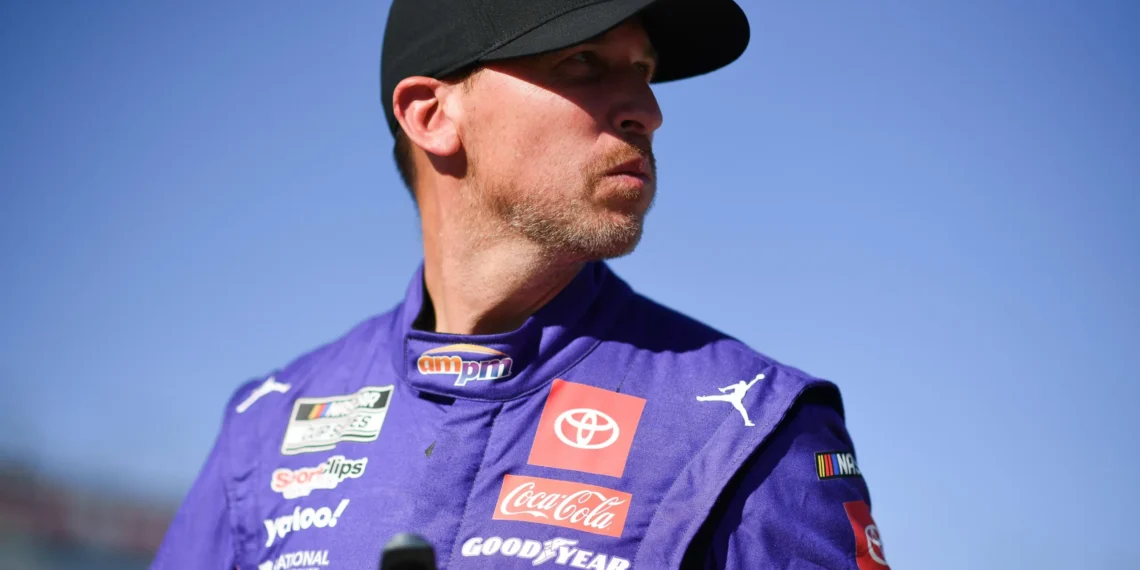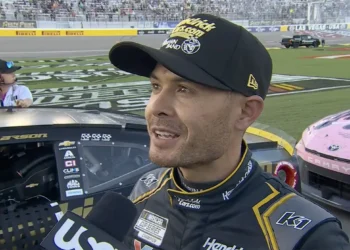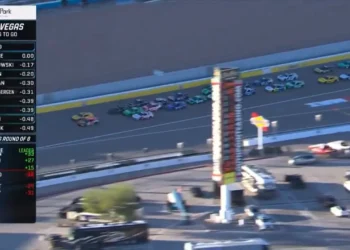NASCAR’s Bold Move: A Million-Dollar Gamble Ignites Controversy with Denny Hamlin
In the world of NASCAR, change is the name of the game, and the latest twist has sent shockwaves through the racing community. The NASCAR Cup Series All-Star Race, a high-octane spectacle that has captivated fans since its inception as “The Winston” in 1985, is breaking its long-standing traditions yet again. This time, the event is moving to Dover Motor Speedway in 2026, marking a drastic shift as NASCAR attempts to revitalize its image and connect with a new generation of fans.
For 34 of its first 35 years, the All-Star Race took place at the renowned Charlotte Motor Speedway, but in a bid to inject fresh energy into the sport, NASCAR has jumped from venue to venue. Bristol, Texas, and now North Wilkesboro have all played host in recent years, with the 2023-2025 events celebrating NASCAR’s 75th anniversary. Now, the announcement of Dover as the new location has raised eyebrows and sparked heated discussions among insiders and fans alike.
But the drama doesn’t stop there. Denny Hamlin, co-owner of 23XI Racing and a prominent figure in the NASCAR landscape, has voiced his concerns regarding the proposed “Run What Ya Brung” format for the All-Star Race. Speaking candidly on the Actions Detrimental podcast, Hamlin pointed out the financial impracticality of the idea, stating, “I couldn’t imagine what this would cost us. More than likely, 2 million dollars? It just doesn’t make sense, guys… under the parameters that were set, it just wasn’t thought out enough. It’s not feasible.” His words resonate deeply in the racing community, as he highlights the struggles of teams like his own, which lack the resources of powerhouse organizations like Gibbs or Hendrick.
The proposed changes have ignited a firestorm of debate, with industry insiders like Jordan Bianchi and NASCAR executive Steve O’Donnell emphasizing the need for innovation while providing teams ample preparation time. Bianchi remarked, “They talk about the All-Star Race next year against Dover, and what that could look like… you have to do something really special for that race.” With plans to potentially ramp up horsepower and performance standards, NASCAR is clearly embracing a new era, but at what cost?
Fans are equally divided, with some expressing excitement over the potential for radical changes. One fan quipped, “Haas Factory Team just rolls in with an F1 car,” while another joked about the possibility of seeing 2000 hp cars drifting through turns at blistering speeds. The Garage 56 Chevrolet Camaro ZL1, which competed at the 2023 24 Hours of Le Mans, serves as an example of the kind of ambitious modifications that could be on the horizon. However, the reality remains that modern Cup Series cars are bound by strict regulations that limit their performance capabilities.
As the narrative unfolds, the culture of NASCAR is at a crossroads. The sport’s leadership is desperately trying to resonate with its core audience, yet the financial realities and safety concerns cannot be overlooked. With millions at stake and the future of the All-Star Race hanging in the balance, the question remains: can NASCAR strike the right balance between thrilling spectacle and fiscal responsibility?
As fans dream of outrageous possibilities—like a literal submarine appearing on the track, as one joked—NASCAR must navigate the turbulent waters of innovation, safety, and feasibility. The stakes have never been higher, and the road ahead is fraught with challenges. Will NASCAR heed the warnings of veterans like Denny Hamlin, or will it continue down this risky path in pursuit of the next big thrill? The countdown to the next All-Star Race has officially begun, and the world will be watching.













